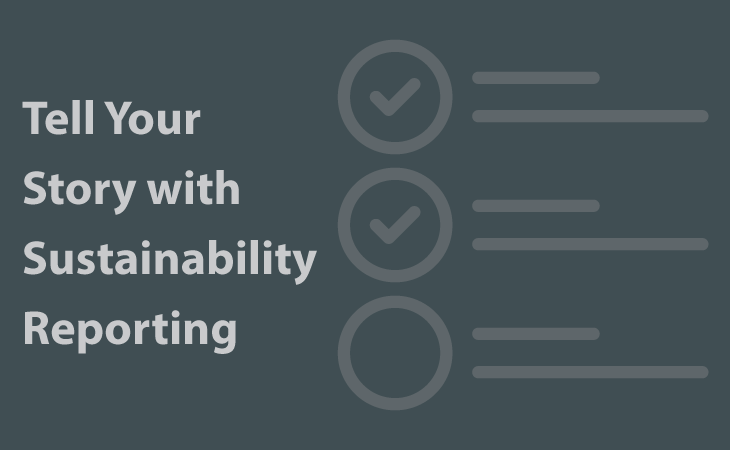This website uses cookies so that we can provide you with the best user experience possible. Cookie information is stored in your browser and performs functions such as recognising you when you return to our website and helping our team to understand which sections of the website you find most interesting and useful.
News
Wrap It Up and Tell Your Story With (Sustainability) Reporting
It’s time to tell the world about your sustainability efforts.
At this point, you should have executed a materiality analysis study to identify your key “hotspots,” undertaken a life-cycle assessment, and used your LCA methodology to measure your company’s and/or industry’s performance on those hotspot issues. In addition, you should have established key performance indicators (KPIs) and measurable goals for each hotspot so that your progress has been measurable.
Now you need to report on your efforts. Tell your stakeholders what you’ve been working on, and highlight your accomplishments and acknowledge the exciting steps in your sustainability journey that lay ahead.
You need to report on your results.
A sustainability report can be:
- a standalone report on your positioning, strategy, hotspots, data, goals, KPIs, and results
- a business report that embeds sustainability
Unless you are undertaking an industry or market sector sustainability effort, it is advisable to embed your sustainability reporting into your broader annual business report. And, fortunately, you don’t have to reinvent the wheel to do so.
Enter the GRI report.
The most widely used sustainability reporting standard is the Global Reporting Initiative (GRI) model.
The Global Reporting Initiative is an international organization that has developed a globally recognized standard for sustainability reporting. The current version, the G4:
“places the concept of materiality at the heart of sustainability reporting. This means encouraging reporting organizations to only provide information on the issues that are really critical in order to achieve the organization’s goals for sustainability and manage its impact on environment and society. This will result in reports that are strategic and focused… In this way G4 invites companies to analyze the fundamental links between their sustainability impacts and their business strategy and operations.”
Even if you are undertaking an industry-based initiative or don’t typically do an annual report (e.g., you are a privately owned company), you can use the G4 elements. The reporting structure is set up so you use it to report on the sustainability components in such a way that you are demonstrating that sustainability has become part of your organizational DNA.
While companies should typically report annually, for industry-wide initiatives it often takes 2—3 years to react and respond to the KPIs and goals.
Sustainability is an iterative process.
Sustainability is an iterative process leading to a continuous improvement journey with no end.
Sustainability isn’t something you do, mark a checkbox, and move on. It’s an ongoing, iterative process by which companies and industries make changes and continually adjust their operations in order to do more with less. As you make progress in the first 3—5 years, your current hotspots should be addressed (i.e., not hotspots anymore) and new hotspots will emerge as a result of your next materiality assessment. And thus the cycle begins anew.
This cycle of assessment and executing on your findings, repeated every 3—5 years, encourages continuous improvement and ensures solid, measurable, and quantifiable progress on sustainability. This also puts your sustainability efforts on a science-based, quantifiable, and clearly defined path forward. This is the journey that the Vinyl Institute and the vinyl industry have embarked upon—and it is one your company and your industry can do too.


